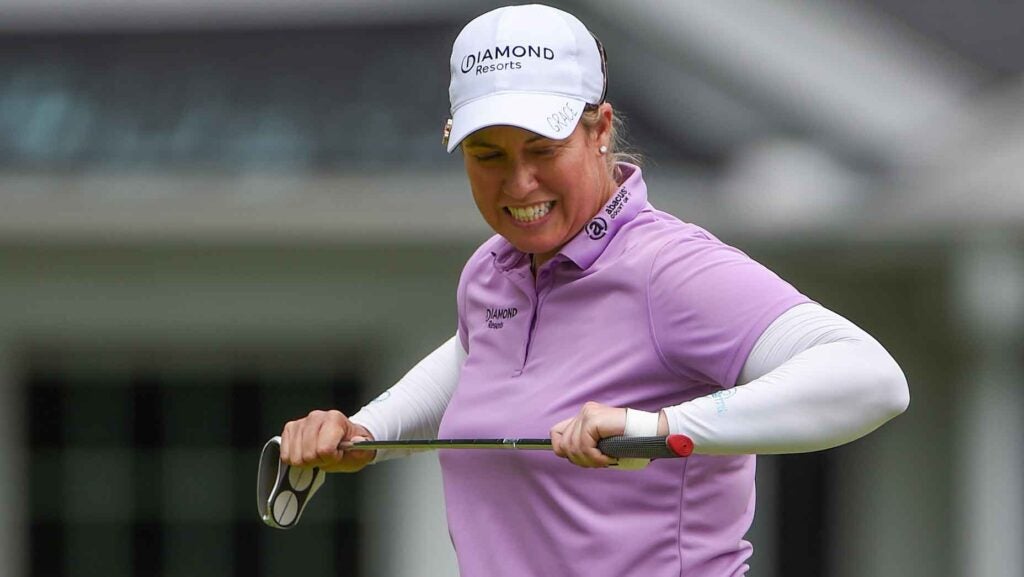One of my core memories on the golf course involves my ultimate what-if round. I was in my 20s, post-college, and playing a fun holiday-season round in the California desert with my family. I was a solid player but had never posted a round under par.
Somehow, on this particular day, everything was clicking, and I found myself four under par on the 14th tee. I remember being unaware of exactly how low my score was (I was too afraid to tally), but totally aware that I was on my way to a career day.
But then — an abrupt unraveling. A slightly wayward drive found a fairway bunker. Then the follow-up disappeared into thick palm fronds. All the sudden, I had a quad on the card, and it totally destroyed me. I limped my way to the finish, ultimately posting a 75 — a round that would normally be cause for rejoicing. But my perspective was completely clouded by the what-if.
Though I did ultimately break the even-par barrier a year or so later (for the first and only time in my life thus far!), that round has always haunted me. My collapse was both mental and physical. Could it have been avoided? And how?
When I had the chance to talk to longtime Top 100 Teacher Jerry King at GOLF’s recent Top 100 Teacher Retreat in Scottsdale, Ariz., the topic was on my mind. I asked King: How can you stop the bleeding when you’re in the midst of a potential round-killing meltdown?
“You’ve got to stay in the present, and you’ve got to be able to focus on that shot,” King said. “You can’t worry about the three-putt or the four-putt or the triple bogey that you made on the last hole. It’s all about: How do you reboot?”
According to King, the key to resetting is about strategically employing the most natural instinct in the world: breathing.
“The years that I’ve done a little bit of yoga, I actually learned how to breathe for the first time,” King said. “That sounds funny. But how do you breathe in the nose? How do you do calming, relaxing, breathing — belly breathing — and then, being able to look up and find the smallest little cloud in the sky and breathe and focus on that smallest cloud.
“If you do this for about 15 seconds, that cloud will disappear. And it’s the damnest thing. You see it, and it disappears at that point when all you’re focusing on is your breathing, and it allows you to kind of reboot and reset and then move on.”
This was fascinating intel to me, so I pushed for a few more specifics. Breathing in through the nose, out through the mouth?
“In the nose and out the nose, if you’re going to really slow it down,” King clarified. “Really, it’s being able to really feel it all the way down into your stomach, and belly-breathe in your nose and out your nose. And being able to focus on something like the edge of a tree, the cloud I mentioned. It’s just being able to blink out, then take a deep breath.
“And as soon as you take that breath and you’re back into a shot, that first step to walk up into your routine is your step of commitment. That is all you’re focused on, the things that you can control, going through the good routine, having a good tempo, being able to visualize the shot, the things that are in your control. Focus on the controllable, and that’s it.”
To summarize: Controlled, focused breathing for 15-30 seconds after something unpleasant happens to you on the course is the key to a mental and physical reset. I know I’ll be giving it a try!
Palm Golf Co. Wasted Management T-Shirt
View Product

